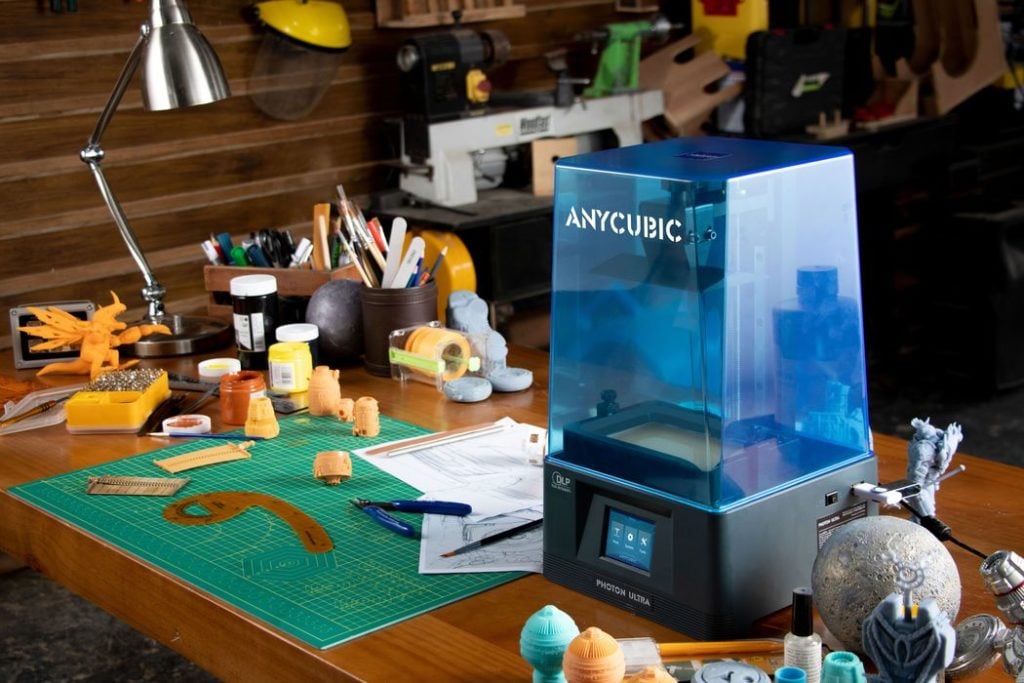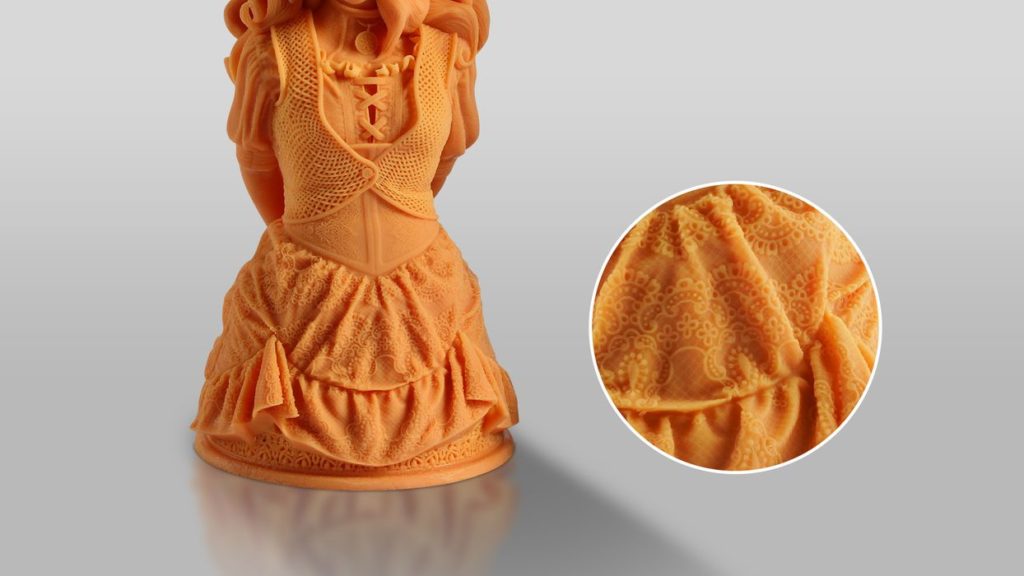
SPONSORED CONTENT
Anycubic is preparing to launch a new desktop resin 3D printer, the Photon Ultra.
The Shenzhen-based manufacturer produces multiple 3D printers, which use both filament and resin processes. Recently we reviewed their impressive Vyper 3D printer, but it’s not the only device in their catalog.
“Photon” is the name for the Anycubic resin 3D printer line, which currently includes the Photon S, Photon Mono, Photon Mono X and Photon Mono SE. Now the company is set to add another entry to the Photon series, the new Photon Ultra.
Why make another resin 3D printer? It’s because the Photon Ultra is quite different under the covers.
Almost all desktop resin 3D printers use the MSLA process, which involves placing an LCD panel over a light source. The LCD “masks” the light selectively by turning pixels on or off when printing each layer.
However, the new Photon Ultra will not use MSLA, but instead will use a DLP light engine, an entirely different process.
DLP technology is often used in video projectors, but the process is quite similar in this 3D printer. The Photon Ultra has a powerful light source that throws UV light at a DLP chip. The DLP chip is actually an array of hundreds of thousands of tiny mirrors that can reflect the incoming light rays. Anycubic is using Texas Instrument’s latest DLP technology in the Photon Ultra.
When 3D printing, the mirrors are configured to selectively reflect light toward the resin tank. This controls the solidification of each pixel similar to MSLA, except no LCD panel is involved.
There are several advantages to this approach.
First, the DLP chip has a much longer expected lifetime than a typical LCD panel. LCD panels eventually wear out and must be replaced. Here, the DLP system will make the Photon Ultra last up to 10X longer. This could save money by delaying the future need to replace the 3D printer.
The second advantage is energy. In an MSLA system the light is selectively masked by the LCD panel. However, even where the LCD panel allows light to pass through, the panel still absorbs a percentage of the energy. However, in a DLP system the mirrors reflect nearly 100% of the light and thus more energy strikes the resin. In practice this means printing proceeds faster. Anycubic said the Photon Ultra’s typical layer exposure time is only 1.5-2.0 seconds, depending on the type of resin used.
Another advantage is energy savings. In an MSLA system the light source is typically an array of LED lights. However, in a DLP system there’s usually a single light source, which is more efficient. For the Photon Ultra, Anycubic said only 12w are consumed during operations, as compared to up to 60w for MSLA systems.
These changes to the machine design imply very little maintenance is required as compared to typical MSLA resin 3D printers. The cost of replacing LCD panels on an MSLA machine over its lifetime might be as much as outright buying the Photon Ultra.
The result of these changes is a desktop resin 3D printer that can print highly accurate models at a rapid pace, and do so for years.

Anycubic Photon Ultra Resolution
There’s one specification that requires some explanation. While the machine’s pixel resolution is specified as only 1280 x 720, there’s more to the story. Other MSLA machines have resolutions of 2048 or even 4096 pixels, so you’d think they would produce better quality output than the Photon Ultra. This is not the case, according to Anycubic. They explain:
“Although the specified resolution of this DLP printer Anycubic Photon Ultra is rated at 720p, its print quality is even better than that of 2k/4k monochrome LCD screen printers. This is because DLP printers use a different technology to project light compared to LCD printers. DLP printers use a projector that reflects all the light to a pixel via a micro-mirror, therefore, there is no light convergence, achieving crisper black-white contrasts. LCD printers converge all the light to a pixel, which can cause bumps and shadows on the edge of models. When displaying thin lines and small-size texts, DLP printers are clearer than LCD printers with purer colors and richer layers, resulting in more delicate texture and sharper corners of models.”
Another very interesting feature on the Photon Ultra I have not seen on other equipment is a laser-engraved build plate. This is to enhance the adhesion of the first layer, a problem often encountered with resin 3D printers.

The Photon Ultra has a generous build volume of 102.4 x 57.6 x 165 mm, which should be suitable for almost all jewelry or figurine 3D prints. The DLP system delivers an XY resolution of 0.08mm, and the Z-axis layer size is a tiny 0.01mm.
The dimensions and weight of the Photon Ultra allow it to be easily placed on any desk without taking up much space. It weighs only 4kg!
Anycubic is to launch the Photon Ultra on Kickstarter on September 14th, so it’s not quite available yet. However, it is possible to visit the landing page and subscribe to be notified when the campaign officially launches and catch the early discount pricing.
When live, early bird backers will be able to take advantage of some very aggressive pricing:
- Super Early Bird price (first 100 units): US$399
- Early Bird price (next 2000 units): US$499
- Retail price: US$599
That’s a one-third discount over retail, so this machine could be of interest to anyone seeking a desktop resin printer that prints quickly. It could be the most affordable DLP 3D printer on the market.
Watch for the Kickstarter launch.
Via Superbacker
